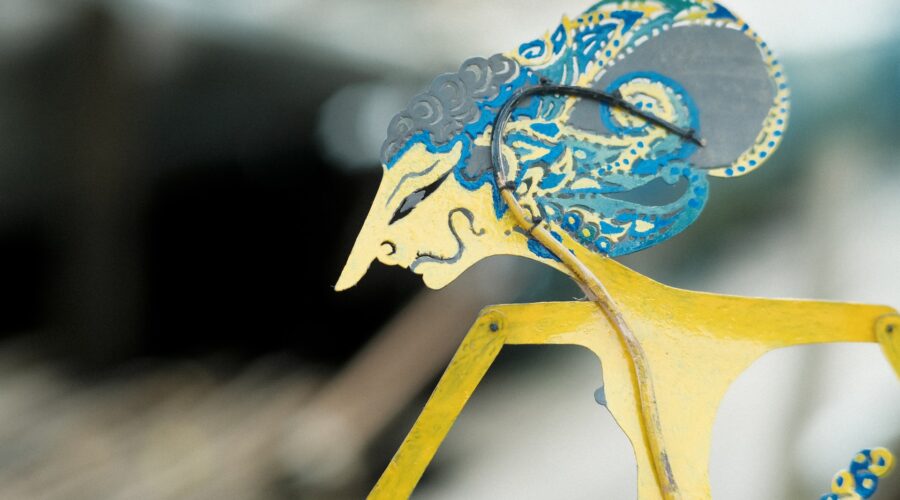In the popularized American version of Christmas, the religious celebration displays many natural and cultural aspects of Western Europe. Think of snow, a fir tree, and reindeer; or Christmas characters such as Krampus (from German mythology) and Santa Claus (Dutch). But Christians – as a religious community – comprise people of various ethnic backgrounds living beyond those regions mentioned above. There is Wigilia in Poland; the Night of Red Radishes in Mexico; and the KFC tradition in Japan.
On the Indonesian island of Java, Christmas celebrations have adapted to fit the culture of the region. Javanese Christians in Central Java and Yogyakarta, for instance, will visit the graves of their ancestors. This tradition is called “nyekar“, which Javanese Muslims also do before Ramadhan or after Eid. Then people will visit their neighbors and families, to mend or improve their relationships. Again, a shared tradition that’s also done by Javanese Muslims on Eid.
In Javanese culture, those who have passed on will always be remembered. They’re still deemed a part of the family. That’s why nyekar exists. And as important as it is to “stay in touch” with those who have passed, it is also important to keep the living in mind. And that’s why visiting neighbors and family members has also become a part of the tradition.
Gift giving is not uncommon, though “parcel” giving is more popular. People may order a Christmas “parcel” and bring it with them when visiting family or neighbors. If the friend or family lives outside the town, they’ll send the package via post. Ready-to-eat snacks, bottled syrups, and ceramic cups are popular gifts, while some people might want to include hand towels and cutlery.
The thing about Christmas parcels is that they’re practical. People may not like your gift, but most can’t say “no” to free food.
It took some time for Christianity to take hold in Java. Once, it was the religion of colonizers and foreigners. There was a social gap between these groups and native commoners (who lived through poverty and slavery). Some cultural components imbued in the church architecture and traditions would later allow native Javanese to feel more at ease. As a result, we have what we call “Javanese churches” today. These churches may look like a local house. A bigger church usually features a joglo, a traditional Javanese house with a pyramid roof (tajug). A classic joglo is usually built on an elevated ground, but modern joglos often skip this rule. Some churches may have an extravagant entrance that reminds you of ancient temples.
Many Javanese churches conduct religious sermons in Javanese. You might spot grandmas wearing batik jarik and kebaya, while younger congregants batik shirts or simple white blouses and trousers. Different aspects of native culture would also appear during holy day celebrations, such as gamelan orchestra and wayang kulit (shadow leather puppets) show.
The wayang performance is often conducted at select churches with a priest being the master puppet (dhalang). What’s unique about this native art form is that it was once used to spread Hinduism in Java.
Originally, wayang told stories about talking animals and plants (fables). It had nothing to do with religion. Since Javanese Hinduism was an exclusive religion for those who could speak Sanskrit (i.e. the nobles and educated folks), it couldn’t reach the lay people and thus stunted its own growth. Through wayang, nobles extended its reach and increased the number of converts. The Hindufied wayang has lasted for so long that even today’s Javanese would often mistake it as the original version.
The same strategy was tried during Islamized Java times, but it couldn’t really work due to restrictions on the depiction of live beings. That’s why you can hardly find the Muslim version here – despite the fact that the island houses a large Muslim population.
Javanese Christians call the Christianized version of wayang “wayang wahyu”. Sometimes it’s also called “wayang Yesus” (Jesus’ wayang). It features Biblical stories and characters, along with gamelan music and a dalang (puppeteer) speaking in Javanese. Some churches open the show to the public. It’s not uncommon for church attendees to wear traditional Javanese clothes and kondhe (Javanese hair buns) for the ladies.
The idea of wayang wahyu didn’t come into being until the 1960s, when a Javanese Catholic priest came up with the idea of telling Biblical stories using a local medium. Since then, wayang wahyu has become a part of religious celebrations for Javanese Christians.
Image: Handmade wayang by Lighten Up

